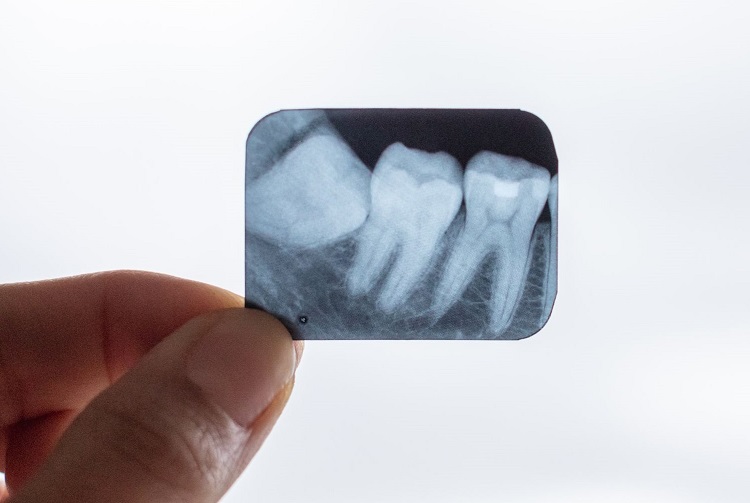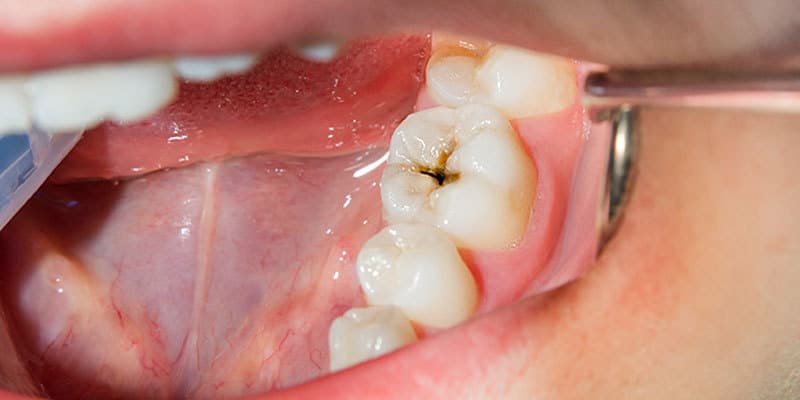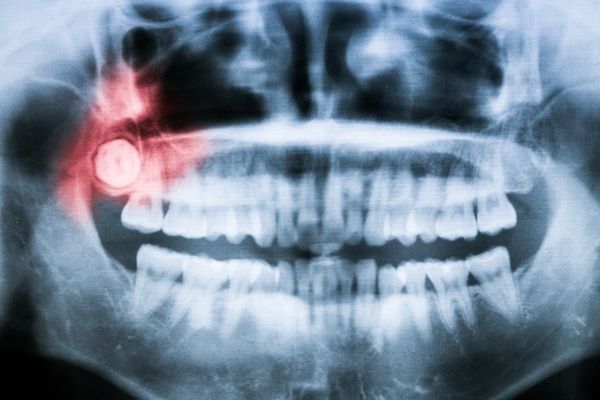Last Updated on: 5th December 2024, 08:57 am
The third molars, commonly known as wisdom teeth, are the last teeth to erupt in the mouth. They are located at the back of the mouth in each quadrant and usually appear from 18 to 25 years of age, although they may appear sooner or later. However, in many cases the wisdom teeth do not have enough space to come out and are retained or do not erupt. Sometimes, only one or two come out, or not all four come out, and they don’t always come out at the same time. By erupting later than the other teeth, it is common for wisdom teeth to affect other teeth in the process, moving or twisting them in place.
What are impacted teeth?
Impacted teeth halfway through eruption; they can remain partially or totally, inside the bone. Wisdom teeth and canines are the teeth that present this alteration most frequently.
What happens when the dentist diagnoses impacted wisdom teeth?
As already mentioned, the wisdom teeth are the last teeth to erupt in the mouth, located at the back of the arch. But sometimes, these molars do not have enough space to emerge or they do not find their correct position in the oral cavity, and their eruption is blocked. This is known as impacted wisdom teeth. In other words, when the wisdom teeth do not find their natural exit, they may not erupt or partially erupt.

Impacted wisdom teeth can cause pain, injury to other teeth, and other dental problems; for these reasons their extraction is recommended. Some dentists also recommend removing symptom-free wisdom teeth to prevent future problems.
Symptoms of impacted molars
Impacted wisdom teeth don’t always cause symptoms. However, in some cases or when the impacted tooth becomes infected, damage to other teeth may occur or other dental problems. The following manifestations may appear:
- Entrapment of food is the most common sign. When the teeth are partially impacted (one part manages to come out and another part is covered by the gum), food remains between the tooth and the gum that covers it. Dental hygiene is very difficult and bacteria and food particles accumulate under the gum. This causes inflammation, pain, and a bad odor.
- Red or swollen gums
- Tender or bleeding gums
- Jaw pain that can radiate to the ear
- Swelling around the jaw
- Bad breath
- Difficulty opening your mouth

Complications
Beyond these symptoms, this dental condition can trigger certain serious problems: infection and damage to other teeth: If the wisdom tooth presses against the second molar, it can damage the second molar or increase the risk of infection in that area. This pressure can also cause problems with crowding of the other teeth or may require orthodontic treatment to straighten other teeth.
- Cysts: Wisdom teeth form in a sac inside the jaw. This sac can fill with fluid, forming a cyst that can damage the jaw, teeth, and nerves. In rare cases, a tumor develops, usually non-cancerous (benign). This complication may require the removal of tissue and bone.
- Cavities: Partially retained wisdom teeth appear to be at higher risk for cavities than other teeth. This may occur because wisdom teeth are more difficult to clean and because food and bacteria are easily trapped between the gum and the partially erupted tooth.

- Periodontal disease: Difficulty cleaning retained wisdom teeth that have partially erupted increases the risk of developing a painful and inflammatory condition in the gums in that area called “pericoronitis”..
Treatment of impacted wisdom teeth
The treatment of impacted wisdom teeth depends, to a large extent, on whether they cause symptoms and affect the patient’s quality of life. According to the ADA, wisdom teeth that are not removed should continue to be monitored because there is the possibility of developing problems later.
Removal of impacted wisdom teeth is a common outpatient process performed in the office, under local anesthesia, taking between 30 and 60 minutes. In the procedure, the oral surgeon makes a cut in the gum and removes the bone covering the molar. Then he will remove the tooth, whole or in fragments, as the case requires. The wound is then sutured with stitches and gauze is placed in the area.

The professional will give the necessary indications to promote healing. As with any surgery, the patient is likely to have residual bleeding and swelling for the first few days. They need to limit their activities, although most people recover quickly and easily. Rest and something cold placed in the area, taking anti-inflammatories and antibiotics (if necessary) and a soft diet will all help to recover better and prevent complications. Seven days after the surgery, it will be necessary to return to the office to remove the stitches and for postoperative control.
Prevention
Impacted wisdom teeth cannot be prevented, but a regular visit to the dentist allows the monitoring of tooth growth and eruption. Visiting the dentist periodically ensures control and a timely detection of any problem in the oral cavity. You can book with our dentists in Ventura, Oxnard, Port Hueneme and Santa Paula.
Contact Us
At Channel Island Family Dental, we undertake a clinical and radiological diagnosis of your particular case to prevent problems with your wisdom teeth. Our team of expert surgery specialists will solve your problem painlessly and quickly, minimizing post-operative risks.
If you have any questions about this or other topics, contact us on our Facebook page. At Channel Island Family Dental, we are always attentive to your needs to make a timely diagnosis. In addition, our dentists in Oxnard, Santa Paula, Newbury Park Ventura, and Port Hueneme will guide you to the best treatment to give you back your best smile.



